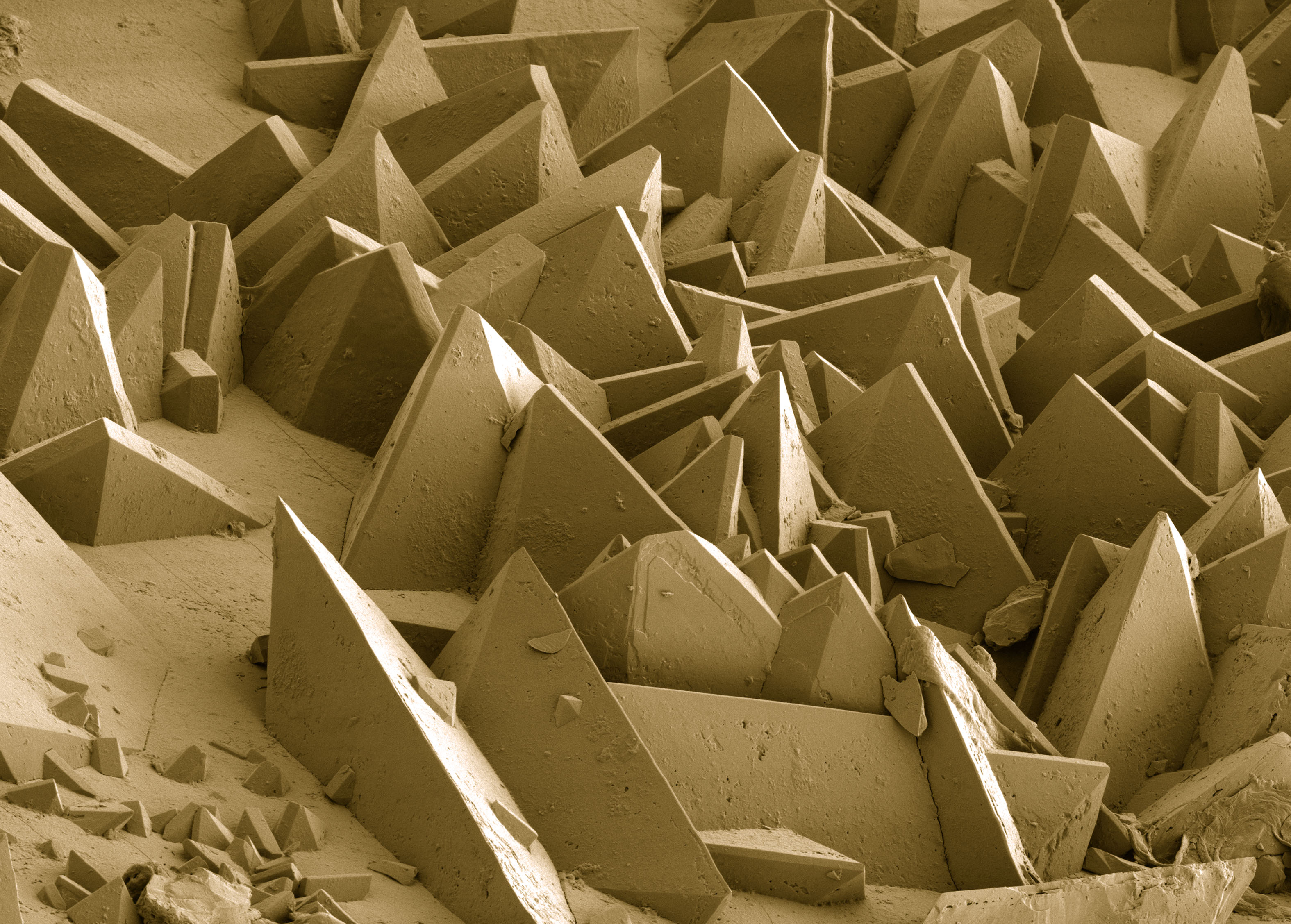
The crystallized surface of a kidney stone, captured here in a micrograph by Thomas Deerinck at the UC San Diego National Center for Microscopy and Imaging Research
Each year, roughly half a million people rush to hospital emergency departments with kidney stone problems. It’s estimated that one in 10 people will have a kidney stone at some time in their lives.
Kidney stones are hard objects composed of chemicals in the urine. There are four types: calcium oxalate, uric acid, struvite and cystine. There are many reasons why they may form: diet, excess body weight, some medical conditions and certain supplements and medications.
Passing stones from the kidney through the urinary tract and out of the body can be quite painful, usually due to blockage of the ureters, which cause the kidney to swell and the ureter to spasm. But the crystallized surface of a kidney stone, captured here in a micrograph by Thomas Deerinck at the UC San Diego National Center for Microscopy and Imaging Research is painful to look at too.
— Scott LaFee